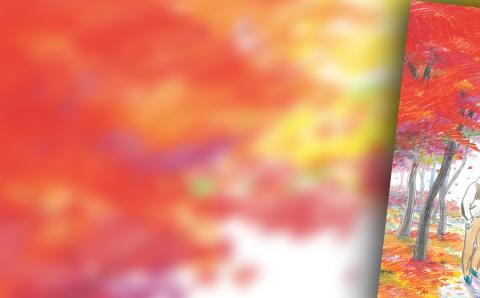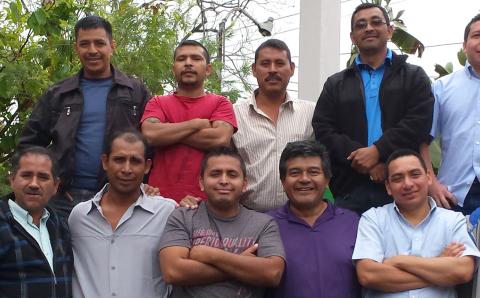It’s that time of year again: harvest and thanksgiving. Farmers are harvesting or have already harvested their crops. Gardeners have picked their produce. Let’s all celebrate!
People have held food festivals as long as crops have been grown. They know that they’ll have enough to eat through the long winter, so they celebrate. Some people call it Harvest Festival. We call it Thanksgiving because we thank God for making the food grow.
Many of us sit down to a big feast with family and friends. We thank the cook and enjoy turkey, cranberry sauce, mashed potatoes, and pumpkin pie. But we don’t always think about the wonderful miracle of growth that God makes happen. So this year, let’s take a closer look at some of the plants our food comes from and hold our own real thanksgiving.
Queen Anne’s . . . Carrots?
You know what Queen Anne’s Lace looks like, don’t you? It blooms in late summer. After the plant dies, it simply dries. It still looks like lace.
Look around for that big lacy flower—you may be able to find some Queen Anne’s Lace nearby. Keep your eyes open in fields or along roadsides. If you find one, pull it gently from the earth. Pull from the bottom of the plant. You need to pull the root out of the earth.
Once you have the root in your hand, smell it. What vegetable can you smell, maybe only slightly? Smell it again. Yes, it’s a carrot! Queen Anne’s Lace is the original source of the vegetable we call carrot today.
Over the years, scientists have developed carrot plants with a bigger, more tender root. But God gave us the first carrot: Queen Anne’s Lace!
The Kernel of Life
Next time you eat corn that’s been cut off the cob, take a closer look at one kernel. Down at the bottom of the kernel, you’ll see a light yellow part. Around it the kernel is darker yellow. That darker yellow is the foodstuff of the corn. That gives it most of the flavor and the nutrition.
That lighter yellow kernel part is the life of the corn. It’s the part that sprouts into a corn plant. That’s the mysterious stuff of life that we can’t make.
Only God can make life. Only God can make food for life. Thank farmers for harvest. And thank God for life.
Cranberries Have Wet Feet
Cranberry bushes are low, scrubby plants that like to get their feet wet. Their roots need plenty of water, so they grow in bogs and swampy areas.
You’d think that finding and picking ripe cranberries would be a soggy, wet, dirty job. But that’s not the case.
As a cranberry ripens, it develops an air pocket inside. So when it’s ripe, it floats. If a ripe cranberry falls from the bush, you can see a red berry floating on top of the water.
That makes finding ripe cranberries fairly easy. Cranberry farmers make it easier yet: they flood cranberry bogs at harvest time.
Even without the flooding, red ripe cranberries floating in a bog can be spotted by people and other creatures. Wild cranberries feed wild animals.
Maybe that’s why God made them red!
Flavors, Spices, and More
What’s your favorite milkshake flavor—strawberry, vanilla, or chocolate? Whatever it is, that flavor came from a plant.
Strawberry flavor comes from strawberry plants, of course.
Chocolate flavor comes from the cacao tree. These trees grow in Central and South America. The seed pods of cacao trees taste like chocolate. The chocolate syrup you love comes from mashed or ground or processed tree seeds.
Vanilla comes from vanilla orchids. Your vanilla ice cream is flavored with processed vanilla seeds.
Cinnamon comes from the bark of a tree that grows naturally in Southeast Asia.
Pepper also comes from Southeast Asia. One black peppercorn is one seed of a woody vine that grows best in hot, humid places. Originally it was found in rainforests near the equator.
Medicines also came originally from plants. Next time you need to take an aspirin to bring down a fever or chase away a headache, give thanks for the bark of a certain willow tree that gave us our original aspirin.
This Thanksgiving Day, look at your table and thank God for all the things that help us live well.
Plant a Potato
If you’ve ever had to peel potatoes for supper, you know what potato eyes are. If you don’t know what eyes are, go to your kitchen and find an unpeeled potato. Look closely at it. See those little dents and hard spots? Those are potato eyes.
The eyes are where the sprouts come out. The sprouts look like little white roots growing from the potatoes. That’s exactly what they are . . . roots!
Gardeners plant a potato patch by cutting up potatoes with eyes. They leave an eye (or a sprouted eye) in each part. Then they plant the parts into loose soil. Each potato section sprouts into a new potato plant.
You can grow your own potatoes. In many parts of North America, it’s too cold outside to do that now. But you can plant a potato inside and watch it grow. Here’s how.
- Find a tall clear 2-liter plastic bottle. Clean it well.
- Cut off the upper third of the bottle. You should have a tall, straight clear bottle.
- Using a nail, poke a few small holes into the bottom of the bottle.
- Fill the bottle about ¾ full with loose soil.
- Find a small potato with eyes in it. If you can find a small potato with sprouts, that’s better yet. This is your seed potato.
- Push the seed potato gently into the soil inside the bottle.
- Cover it with a little more soil, keep the soil damp, and watch it grow.
About the Author
Joanne De Jonge is a freelance writer and a former U.S. National Park Ranger. She attends West Valley Christian Fellowship in Phoenix, Ariz.









